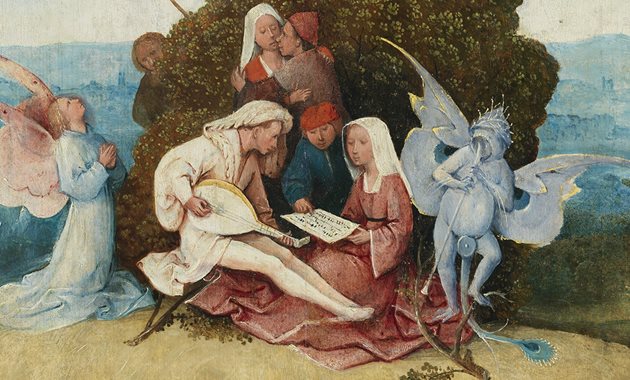
DEN BOSCH, Netherlands (AFP) – Monsters gorging on lost souls, demons torturing sinners contorted in pain, grinning skeletons awaiting the dying: the nightmarish visions of Hieronymus Bosch have both inspired and terrified for centuries.
Now to mark the 500th anniversary of the Dutch painter’s death, a small museum in his hometown of Hertogenbosch has pulled off a miracle — bringing together 20 of the last 25 known surviving panels by the man dubbed “the devil’s painter.”
The exhibition at the Noordbrabants Museum opens in February, and marks the culmination of a nine-year quest by director Charles de Mooij to reunite Bosch’s unique artistic legacy in the place where he lived, worked and died.
It will also kick off a year of events in ‘s-Hertogenbosch to honor its most famous son with parades, events and art shows, which will even see some of Bosch’s most diabolical creations stalk the streets of the medieval town.
Despite the small body of his remaining works scattered in museums around the world — as well as changing tastes over half a millennium — fascination with Bosch has never waned.
“He created his own new imaginary language,” De Mooij explained to AFP. “All his paintings have that moralistic approach, have that message that you have to be aware of the evil in your life.”
– Beware evil –
Bosch was seeking to warn that as man journeys though life, he has choices to make and should use the teachings of Christ as his “moral compass.”
“At the end when you are judged … if you have given way to all those temptations you will go to hell,” De Mooij said.
Bosch’s most famous artwork, a triptych called “The Garden of Earthly Delights” — a journey from Adam and Eve in the Garden of Eden to a terrifying vision of hell — will not be on display.
It hangs in the Museo Nacional del Prado in Madrid, and De Mooij knew Spain would never let it travel abroad.
“It’s a pity that we don’t have it, but it’s understandable,” said De Mooij, comparing it to Holland’s most precious Rembrandt, “The Night Watch,” which draws crowds to the Rijksmuseum in Amsterdam.
“Would the Rijksmuseum lend ‘The Night Watch’? No never, of course not.”
But in a remarkable coup, the Prado has agreed to allow Bosch’s “The Haywain” to leave Spain for the first time in 450 years.

Among other important works in the exhibition will be “Death and the Miser,” currently owned by the National Gallery in Washington, and “The Ship of Fools,” from the Louvre in Paris.
______
By Jo Biddle, AFP


